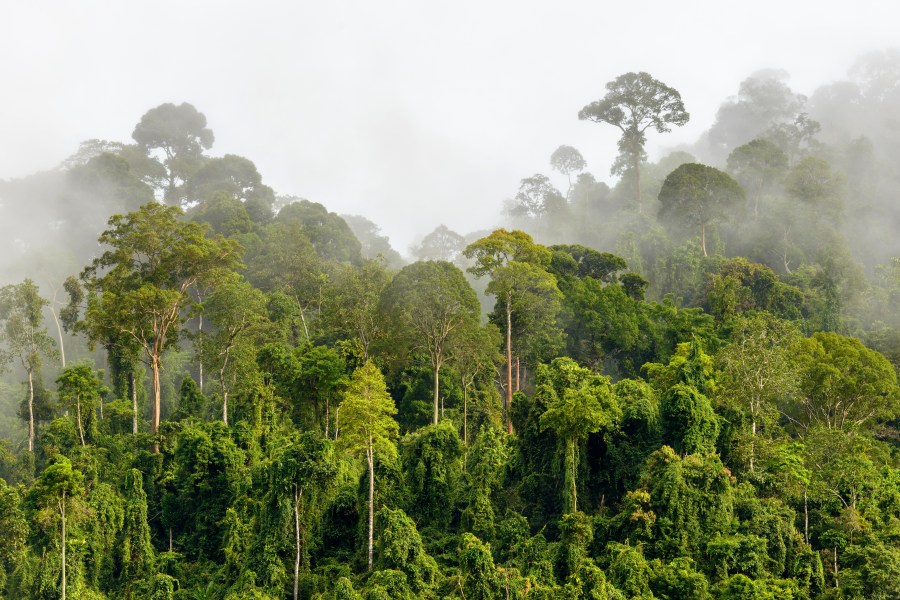Earth’s Five Types of Natural Environments

The Earth’s surface contains a number of diverse natural environments. A natural environment can be defined as the flora, fauna, rocks, minerals, and atmosphere that make up a single ecological system, often spanning a large area. Natural environments often overlap and compete with both each other and with human-built environments, such as cities, manufacturing plants, and parks.
Different types of natural environments include oceans, grasslands, tundra, rainforests, and deserts. Each environment has unique soils, climates, water systems, and weather phenomena that are capable of supporting the life forms located in that environment. Natural environments are constantly changing and can be greatly impacted by Earth’s physical and chemical changes. The diversity of natural environment types reflects the rich variety of flora and fauna species on Earth, and the different conditions necessary for them to thrive.
The term ecosystem, meaning a system of living organisms in an area that depends on the proximate non-living resources to survive and reproduce, is often used interchangeably with the term natural environment. While this is correct in some cases, it is important to note that a single natural environment can also contain multiple ecosystems. The oceans are a good example of this, as the flora and fauna that thrives in coastal regions requires very different living conditions than the organisms found in the deep ocean.
Rain forest environments are one type of natural ecosystem. In total, rain forests produce 40 percent of the oxygen on Earth, despite only taking up 6 percent of the Earth’s surface. They are made up of four layers: emergent, upper canopy, understory, and forest floor. While these layers are all part of one environment, the flora and fauna differ from layer to layer.
Rain forests get their name from the fact that they are almost completely self watering. Each tree that reaches the canopy level is able to release about 200 gallons of water into the air per year. This creates a permanent cloud that hangs low over the canopy, helping the forest stay hydrated between periods of rainfall. This creates a fertile environment for plants, with two thirds of the total plant species on Earth growing in the rain forest. In recent years, rain forest environments have been threatened by deforestation, and scientists have warned that further logging in rain forests could have long term negative effects on the Earth’s climate.
Ocean environments are found all over the world, and are the largest natural environment. More than 70 percent of the earth’s surface is covered by oceans, and they contain a total of 97 percent of our water supply. The world’s oceans support many unique habitats–phytoplankton, kelp, and seaweed thrive at the surface, and tube worms, mussels, and clams live on the deep sea floor thanks to hydrothermal vents that pump minerals from the Earth’s crust into the ocean.
Desert environments can be found on every continent, and can be either very hot and sandy or very cold and icy. While desert environments have a reputation as an inhospitable place to live, about one sixth of Earth’s total human population lives in a desert environment. Deserts are distinguished by the fact that they are likely to regularly lose more moisture through evaporation than they receive through precipitation. Flora and fauna that live in desert environments have found ways to adapt to the harsh living conditions. Plants that may not receive water for several years at a time have adapted by either finding water with their roots deep underground, or by being able to store reserves of water for long periods of time. In hot desert environments, many animals avoid the heat by living a nocturnal lifestyle, only searching for food and water at night.
Grasslands are environments that are formed when an area receives too much precipitation to be classified as a desert, but not enough precipitation to support a forest environment. They are characterized by their most populous form of plant–grass.
The two types of grasslands are tropical and temperate, with tropical grasslands usually falling in the southern hemisphere. Tropical grasslands have both a dry season and a rainy season. Because these tropical environments receive more rain than temperate grasslands, their grasses can grow up to 7 feet tall. Temperate grasslands are characterized by shorter grasses, and have both a growing season and a dormant season. During the dormant season, no grass grows in these environments due to cold temperatures.
Tundra environments can be found around the tops of mountains and in the Arctic. Mountain tundra environments are home to sheep, birds, and mountain goats, while the Arctic tundra houses animals like polar bears, caribou, and Arctic foxes. The tundra is one of the most inhospitable environments for plants and animals, with a cold climate, low rainfall, frequent winds, long winters, and short summers. The tundra environment is highly vulnerable to the effects of global warming, as species are being displaced from disappearing Arctic permafrost into tundra environments, disrupting the tundra’s ecological balance.





